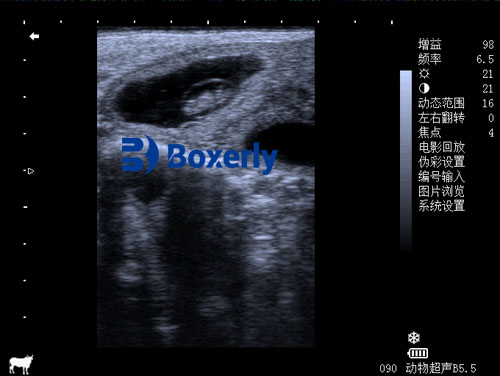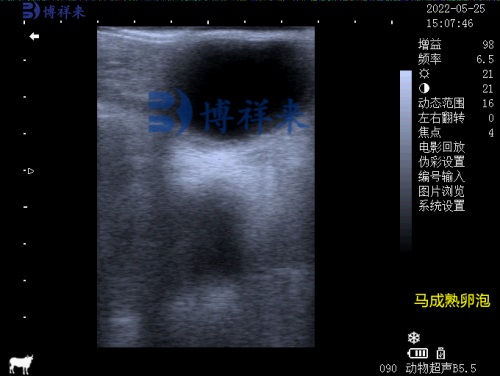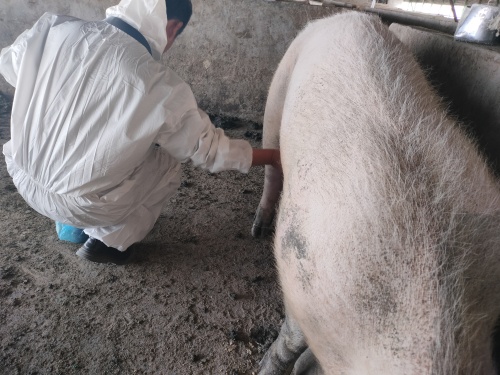What’s the Safest Way to Check Cow Fertility After Calving?
For every farmer, getting cows back in calf quickly and safely is a top priority. After calving the cow’s body needs time to recover, the uterus must involute, and ovarian cycles need to return. If you jump into breeding too early or miss a hidden problem, you pay in extra open days, lower milk yield, and more work. The key question is safety: how do you check fertility after calving in a way that protects the cow, gives useful answers, and helps you act fast? Below I walk through practical methods—what they tell you, their risks, and how to use them together so you spot problems early without harming the cow.

Why Safety and Timing Matter
Safety and timing are linked. A check done too soon or done roughly can injure the cow or give a misleading result. For example, the uterus needs several weeks to shrink and clear after calving; poking around too early increases stress and risk of iatrogenic issues. At the same time, waiting too long to confirm fertility wastes time and costs money. Safe fertility checks balance early detection with minimal handling stress, avoiding unnecessary invasive procedures while still giving the information you need to make breeding decisions.
On-Farm Observation: Useful but Limited
Watching cows closely is the simplest first step. Track heat behavior, appetite, dung consistency, and general brightness. A cow that returns to standing heat at expected times is a good sign; cows that look off, don’t eat, or have abnormal discharges need attention. Observation is cheap and low-risk, but it misses a lot. Many cows experience silent heats or early embryonic loss with no obvious signs. Observation should be your early-warning layer—useful for triage—but it must be paired with diagnostic methods to be dependable.
Rectal Palpation: Fast but Operator-Dependent
Rectal palpation is a long-standing tool vets and experienced techs use to check uterine tone and ovarian structures. When done right, it’s quick and gives a reliable general read after about 40 days post-breeding. The safety caveat: palpation requires skill. Poor technique can cause cow discomfort or, in rare cases, rectal tears. It’s lower-cost than some lab tests and gives immediate answers, but it won’t show subtle uterine fluid or early embryonic heartbeat. Treat palpation as a practical, safe option when performed by trained people and scheduled at the right time.

Hormonal Testing (Milk or Blood Progesterone)
Progesterone testing is a safe, low-stress way to check whether a cow has luteal activity—an indirect sign of pregnancy or ovulation. Collecting a milk sample or small blood draw is less invasive than manual exams and can be done on-farm. The limitation is that progesterone tells you hormonal status, not fetal health. A positive progesterone at the right time suggests the cow has cycled or may be pregnant, but it won’t show uterine infections or embryonic heartbeat. Use hormone tests as an early screen, especially if you want to reduce the number of physical exams you perform.
Ultrasound Scanning: Most Informative and Very Safe
Ultrasound gives a direct, visual picture—fetal heartbeat, embryonic vesicle, uterine fluid, and ovarian structures. When used correctly it’s non-invasive and low-stress. Portable scanners make it practical on-farm; vets or trained techs can confirm pregnancy from around 21 days and follow fetal development later. Ultrasound also detects uterine infections, retained fluids, and ovarian cysts that hormone tests and palpation may miss. The main constraints are equipment cost and training, but for safety, clarity, and decision-making power, ultrasound is the top choice.
How These Methods Compare
| Method | When to Use | What It Shows | Safety / Cow Stress | Practical Notes |
|---|---|---|---|---|
| Observation | Daily, immediate | Behavior, appetite, discharge | Very low | Good for early warning; not definitive |
| Rectal Palpation | ≥ 40 days post-breeding | Uterine tone, large structures | Moderate — operator dependent | Quick, low cost; needs trained operator |
| Progesterone Test | 28–30 days post-breeding | Hormone status (luteal phase) | Low | Good early screen; won’t show fetal wellbeing |
| Ultrasound | 21 days onward | Fetal heartbeat, uterine fluid, ovary | Very low | Most informative; requires device & skill |
Putting Methods Together: A Safe, Practical Routine
No single method is perfect alone. A layered approach gives the best balance of safety and early detection. Start with good observation—keep records of heats and calving dates. At ~28–35 days after service, use a progesterone test or an early ultrasound to screen for pregnancy. If progesterone is high but you want more certainty, follow up with ultrasound at ~40–60 days to confirm viability and check the uterus. Use rectal palpation for quick checks only when a trained person is available and the timing is right. This staged routine minimizes repeated invasive handling while catching most problems early.
Special Cases: When to Call the Vet Sooner
Certain signs mean don’t wait: foul-smelling vaginal discharge, persistent fever, severe drop in milk yield, or cows that remain in heat repeatedly after an expected return. These are red flags for uterine infection, retained membranes, or metabolic disease. Early veterinary assessment with ultrasound and targeted treatment prevents prolonged infertility and protects herd health. Acting early often costs less than treating chronic problems later.
Training, Equipment, and Farm Size Considerations
Small farms may rely on vets for most scans, while larger operations often train staff to run basic progesterone tests and perform ultrasound screening. Buying a portable scanner makes sense if you scan many cows each season; otherwise, scheduled vet visits are usually more economical. Whatever the scale, invest in training—poor technique erodes the safety advantage of any method. Cleanliness, gentle handling, and calm cattle reduce stress and improve the accuracy of all tests.

Economic and Welfare Payoffs
Safe fertility checking reduces open days, lowers repeat inseminations, and shortens the calving interval. That translates directly into saved feed, labor, and better milk or calf output. From an animal welfare perspective, fewer invasive exams and faster, correct treatments reduce cow discomfort and support quicker recovery. The best programs provide both economic returns and measurable welfare gains—two things every farmer wants.
Simple Action Plan Farmers Can Use Tomorrow
- Log service and calving dates for every cow.
- Observe daily; flag cows with abnormal discharge or behavior.
- At ~28–35 days post-service, run a progesterone screen or arrange an early ultrasound.
- Confirm viable pregnancies with ultrasound at ~40–60 days.
- Escalate to veterinary ultrasound and treatment immediately if signs of infection or abnormal fluid appear.
Conclusion
The safest way to check cow fertility after calving is a balanced program: routine observation plus targeted diagnostics. Use low-stress hormone tests as an early screen and confirm with ultrasound when you need information about fetal viability or uterine health. Keep rectal palpation in your toolbox, but only performed by trained hands at the right time. That layered approach keeps cows safe, gives you reliable answers, and helps you act fast to keep the herd productive.





